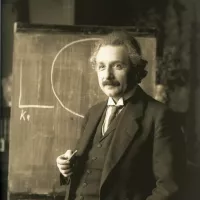Princeton University, located in Princeton, New Jersey, is a private Ivy League research university. Founded in 1746 as the College of New Jersey, it is the fourth-oldest higher education institution in the U.S. Originally established in Elizabeth, it relocated to Newark in 1747 and then to Princeton in 1756. It was renamed Princeton University in 1896. As one of the nine colonial colleges, Princeton has a long history of academic excellence and research.
1900: Formal Establishment of the Graduate School
In 1900, the Graduate School at Princeton University was formally established, marking a significant development in the university's academic structure.
1902: Forced Resignation of President Francis Patton
In 1902, Francis Patton was forced to resign as president of Princeton due to profile changes in the board of trustees and dissatisfaction with his administration.
1903: Football Using Rugby Rules
From 1877 until at least 1903, Princeton played football using rugby rules.
1905: Introduction of the Preceptorial System
In 1905, Woodrow Wilson introduced the preceptorial system at Princeton, a unique educational approach involving small groups of students interacting with instructors, enhancing personalized learning.
1906: Creation of Lake Carnegie and Nonsectarian Status
In 1906, Lake Carnegie was created by Andrew Carnegie, and Princeton University officially became nonsectarian, marking a shift in its religious affiliation.
1907: Decline in Enrollment Due to Academic Standards
In 1907, Princeton University experienced a severe decline in enrollment as a result of the tightening of academic standards implemented by Woodrow Wilson.
1912: John Grier Hibben Becomes President
In 1912, John Grier Hibben became the president of Princeton University, a position he would hold for two decades, overseeing significant developments.
October 2, 1913: Dedication of the Princeton University Graduate College
On October 2, 1913, the Princeton University Graduate College was dedicated, marking a significant milestone in the university's academic expansion.
1917: Princeton Allocates Resources to the Government During WWI
In 1917, upon the United States' entry into World War I, Princeton University, under President Hibben, allocated all available resources to the government, contributing to the war effort.
1919: Creation of the School of Architecture
In 1919, the School of Architecture was created at Princeton University, expanding the university's academic offerings.
1919: Tiger Band Formed
In 1919, the comedic scramble Tiger Band was formed and plays at halftime shows and other events at Princeton.
1921: Creation of the School of Engineering
In 1921, the School of Engineering was created at Princeton University, further expanding the university's academic programs.
1922: Establishment of Selective Admission
In 1922, Princeton University established the system of selective admission in response to a spike in enrollment after World War I.
1923: Introduction of the Senior Thesis
In 1923, John Grier Hibben introduced the senior thesis as part of The New Plan of Study at Princeton University.
1930: Founding of the Institute for Advanced Study
In 1930, the Institute for Advanced Study was founded in Princeton to provide a space for scientists like Albert Einstein, who were leaving Europe due to rising tensions.
1930: Creation of the School of Public and International Affairs
In 1930, the School of Public and International Affairs was created at Princeton University, adding another significant academic department.
1936: First African American Admitted
In 1936, Bruce M. Wright was mistakenly admitted as the first African American, but was asked to leave upon arrival.
1941: Nassoons Formed
In 1941, the oldest a cappella ensemble, the Nassoons, were formed at Princeton.
1945: V-12 Program Instituted
In 1945, Princeton instituted the V-12 program on campus.
1946: Tigertones Formed
In 1946, the all-male a cappella group, the Tigertones, was formed.
1947: First Black Student Graduates
In 1947, John L. Howard became the first Black student to graduate with a bachelor's degree from Princeton.
1948: Firestone Library Built
In 1948, Firestone Library was built as the main campus library and repository for the humanities and social sciences at Princeton University.
1948: Construction of Firestone Library
In 1948, Firestone Library was constructed at Princeton, marking a significant addition to the university's research infrastructure.
1951: Dick Kazmaier Wins Heisman Trophy
In 1951, Dick Kazmaier won Princeton its only Heisman Trophy.
1951: Project Matterhorn Created
In 1951, Project Matterhorn was created as a top-secret Cold War project aimed at achieving controlled nuclear fusion, which later became the Princeton Plasma Physics Laboratory.
1955: Geophysical Fluid Dynamics Laboratory Founded
In 1955, the Geophysical Fluid Dynamics Laboratory (GFDL) was founded.
1957: Wilson Lodge Creation
In 1957, Wilson Lodge (now known as First College) was created to provide an alternative to the eating clubs at Princeton.
1957: Ivy League title streak begins
Since 1957, Princeton has won at least one Ivy League title every year.
1959: Footnotes Formed
In 1959, the all-male a cappella group, the Footnotes, was formed.
1961: Princeton Plasma Physics Laboratory Declassified
In 1961, Project Matterhorn was declassified and received its current name, Princeton Plasma Physics Laboratory (PPPL).
1965: Founding of Students for a Democratic Society (SDS)
In 1965, a local chapter of Students for a Democratic Society (SDS) was founded at Princeton University, leading to increased activism on campus.
1966: SDS Gains Prominence After Protest Against Lyndon B. Johnson
In 1966, the SDS gained prominence on campus following picketing against a speech by President Lyndon B. Johnson, which gained frontpage coverage by the New York Times.
1967: Pete Carril becomes head coach
In 1967, Pete Carril became the head coach of Princeton's men's basketball program.
1967: SDS Members Beat R.O.T.C. Chapter in Football Game
In 1967, SDS members and sympathizers beat the campus R.O.T.C. chapter in a game of touch football, symbolizing the rising tensions and activism on campus.
1967: African American Enrollment Surge
Starting in 1967, African American enrollment surged from 1.7% to 10% but has stagnated ever since.
1968: Wilson Lodge Dedicated as Wilson College
In 1968, Wilson Lodge was dedicated as Wilson College and served as an experiment for the residential college system.
1968: GFDL Relocated to Forrestal Campus
In 1968, the Geophysical Fluid Dynamics Laboratory (GFDL) relocated to Princeton's Forrestal Campus.
1969: Coeducation of Princeton University
In 1969, Princeton University became coeducational, marking a significant shift in its history and opening its doors to female students.
1969: Admission of Women to Princeton University
In 1969, Princeton University began admitting women, ending its long-standing prohibition since its founding in 1746, a major milestone for the institution.
1970: Student, Faculty, and Staff Strike
In 1970, Princeton experienced a student, faculty, and staff member strike aimed at making the university an "institution against expansion of the war."
1971: Dedication of the Third World Center
In 1971, the Third World Center (now known as the Carl A. Fields Center) was dedicated at Princeton, supporting rising diversity on campus.
1971: Tigerlilies Formed
In 1971, the all-female a cappella group, the Tigerlilies, was formed.
1972: End of Robert Goheen's Presidency
In 1972, Robert Goheen's presidency at Princeton University came to an end after a period characterized by more liberal policies and significant expansion.
1973: Conversion of Forrestal Campus Land
In 1973, some of the land at the Forrestal Research Center was converted to commercial and residential spaces due to declining scientific research at the campus.
1973: Princeton Katzenjammers Formed
In 1973, the oldest coed a cappella group in the Ivy League, the Princeton Katzenjammers, was formed.
1977: Princeton Employs Early Action Program
From 1977 to 1995, Princeton employed an early action program for undergraduate admissions.
1979: University Report Recommendation
In 1979, a university report recommended the establishment of five residential colleges at Princeton.
1979: Nude Olympics Goes Co-Educational
In 1979, the Nude Olympics at Princeton went co-educational and gained notoriety with the American press.
1981: Tigressions Formed
In 1981, the all-female a cappella group, the Tigressions, was formed.
1982: Rockefeller College Development
In 1982, Rockefeller College was developed.
1982: Establishment of the Residential College System
In 1982, the residential college system was officially established at Princeton University under President William G. Bowen.
1983: Mathey and Butler Colleges Development
In 1983, Mathey College and Butler College were developed.
1983: Roaring 20 Formed
In 1983, the coed a cappella group, the Roaring 20, was formed.
1984: Bob Bradley coaches men's soccer
In 1984, Bob Bradley, a Princeton alumnus, started coaching the men's soccer team.
1984: Forbes College Development
In 1984, Forbes College was developed.
1985: Jewish Student Body Statistics
In 1985, 16% of the student body was Jewish; the number decreased by 40% from 1985 to 1999.
1986: Institution of the three-point line
In 1986, the three-point line was instituted, which affected Princeton's basketball program.
1987: Wildcats Formed
In 1987, the all-female a cappella group, the Wildcats, was formed.
1987: Gendered Lyrics Changed
In 1987, the university changed the gendered lyrics of "Old Nassau" to reflect the school's co-educational student body.
1988: William G. Bowen's Tenure Ends
In 1988, William G. Bowen's tenure as president of Princeton University came to an end, during which the endowment significantly increased.
1992: Men's lacrosse program success begins
In 1992, Princeton's men's lacrosse program began a period of notable success, winning six national championships until 2001.
1993: Men's soccer at NCAA Final Four
In 1993, the men's soccer team, coached by Bob Bradley, made an appearance at the NCAA Final Four.
1994: Shere Khan Formed
In 1994, the coed a cappella group, Shere Khan, was formed.
1994: Formation of the Princeton Environmental Institute
In 1994, the multidisciplinary Princeton Environmental Institute was formed, later renamed the High Meadows Environmental Institute, highlighting the university's focus on environmental research.
1995: Bob Bradley coaching end
In 1995, Bob Bradley's time coaching the men's soccer team came to an end.
1995: End of Early Action Program
In 1995, Princeton concluded its early action program, transitioning to early decision in 1996.
1996: Carril's final victory at Princeton
In 1996, Carril's final victory at Princeton came when the Tigers beat UCLA, the defending national champion, in the opening round of the NCAA tournament.
1996: Transition to Early Decision
In 1996, Princeton transitioned to an early decision program for undergraduate admissions.
1999: Jewish Student Body Statistics
In 1999, 10% of the student body at Princeton was Jewish.
2000: Nude Olympics Banned
In 2000, due to issues of sexual harassment and safety reasons, the administration banned the Nude Olympics at Princeton.
2001: Elimination of Student Loans
In 2001, Princeton became the first university to eliminate the use of student loans in financial aid, replacing them with grants.
2001: Shift to Grants for Financial Aid and Election of First Female President
In 2001, Princeton shifted its financial aid policy to replace all loans with grants, and Shirley M. Tilghman was elected as the university's first female president.
2001: Men's lacrosse program success ends
In 2001, Princeton's men's lacrosse program winning streak of national championships came to an end.
2003: Pete Hegseth graduates from Princeton
In 2003, Pete Hegseth, the future 29th U.S. Secretary of Defense, graduated from Princeton.
2004: Women's soccer team advances to NCAA semi-finals
In 2004, Princeton women's soccer team advanced to the NCAA Division I Women's Soccer Championship semi-finals, becoming the first Ivy League team to achieve this in a 64-team setting.
December 14, 2005: Princeton ties record for fewest points in a Division I game
On December 14, 2005, Princeton tied the record for the fewest points in a Division I game since the institution of the three-point line in 1986–87, scoring 21 points in a loss against Monmouth University.
September 2006: End of Early Decision Program
In September 2006, Princeton announced the end of its early decision program, considering all applicants in a single pool for the Class of 2012.
2007: Mascot Naming Consideration
In 2007, the Princeton administration considered naming the mascot, but the effort was dropped.
2007: Whitman College Founded
Whitman College was founded and constructed in 2007 at a cost of $100 million, and Butler's dorms were demolished.
2009: Butler College Complex Built
In 2009, a new Butler College complex was built, and Butler and Mathey transitioned to four-year colleges.
2010: U.S. Supreme Court Justices Affiliated with Princeton
As of 2010, twelve U.S. Supreme Court justices had been affiliated with Princeton University, with three serving on the court at the time, underscoring Princeton's influence in the legal field.
February 2011: Reinstatement of Single-Choice Early Action
In February 2011, Princeton announced it would institute a single-choice early action option for applicants, which it still uses.
2012: Field hockey team wins national championship
In 2012, Princeton's field hockey team became the first in the Ivy League to win a national championship.
2012: Shirley M. Tilghman Retires
In 2012, Shirley M. Tilghman retired as president of Princeton, after which she expanded financial aid offerings and conducted several major construction projects.
2012: Diana Matheson scores Olympic goal
In 2012, soccer-player alumna Diana Matheson scored the game-winning goal that earned Canada their Olympic bronze medal.
2012: Class of 2012 Admissions Change
In September 2006, Princeton announced that all applicants for the Class of 2012 would be considered in a single pool, ending the school's early decision program.
2013: Christopher Eisgruber Elected President
In 2013, Christopher Eisgruber was elected as Princeton's 20th and current president, continuing the university's legacy.
2017: Pell Grant Statistics
In 2017, 22% of freshman qualified for federal Pell Grants.
2017: Unveiling of the Princeton & Slavery Project
In 2017, Princeton University unveiled the Princeton & Slavery Project, a large-scale investigation into its historical involvement with slavery.
April 2018: Naming of Public Spaces for Enslaved People
In April 2018, university trustees announced that they would name two public spaces for James Collins Johnson and Betsey Stockton, enslaved people who lived and worked on Princeton's campus.
2018: Bloomberg's List of Richest Places
Based on data in a 2019 article in The Daily Princetonian, 10% of students hail from Bloomberg's 2018 list of "100 richest places".
2018: Princeton athletes compete in Olympics
From 1896 to 2018, 113 athletes from Princeton have competed in the Olympics.
2018: Reinstatement of Transfer Student Program
In 2018, Princeton reinstated its transfer student program after a three-decade moratorium.
2018: Jerome Powell appointed as Chair of the U.S. Federal Reserve Board
In 2018, alumnus Jerome Powell was appointed as Chair of the U.S. Federal Reserve Board.
2018: Ivy League Championships
With its last win being in 2018, Princeton has won 12 Ivy League championships.
2019: Student Demographics Article
Based on data in a 2019 article in The Daily Princetonian, 10% of students hail from Bloomberg's 2018 list of "100 richest places".
2019: Kiplinger Ranking
In 2019, Kiplinger magazine ranked Princeton as the fifth best value school.
2019: Student Activism Concerning Title IX Policy
In 2019, large-scale student activism emerged concerning Princeton's implementation of federal Title IX policy relating to campus sexual assault, involving sit-ins and protests.
2019: Undergraduate Admissions Selectivity
In the 2019-2020 admissions cycle, Princeton's undergraduate program admitted 5.8% of applicants.
2020: Wilson College Renamed First College
In 2020, Princeton University elected to change the name of Wilson College to First College after the recent deaths involving police brutality of black individuals.
2020: Renaming of the Princeton Environmental Institute
In 2020, the Princeton Environmental Institute was renamed the High Meadows Environmental Institute, reflecting its continued focus on environmental research.
2020: Undergraduate Admissions Statistics
In the 2019-2020 admissions cycle (Class of 2024), Princeton's undergraduate program had an average high school GPA of 3.91.
October 2021: Achievements of Princeton University Affiliates
As of October 2021, Princeton University's affiliates included 75 Nobel laureates, 16 Fields Medalists, and 16 Turing Award laureates, highlighting the university's significant contributions to various fields.
2021: National Football Championships
As of 2021, Princeton claims 28 national football championships.
2021: Jewish Student Body Statistics
As of 2021, according to the Center for Jewish Life on campus, the university has approximately 700 Jewish students.
2021: Notable current faculty
As of 2021, notable current faculty members include Angus Deaton, Robert Keohane, Edward W. Felten, Anthony Grafton, Peter Singer, Jim Peebles, Manjul Bhargava, Brian Kernighan, Betsy Levy Paluck and Robert P. George.
2021: Cost of Attendance
As of the 2021-2022 academic year, the total cost of attendance at Princeton is $77,690, with 61% of undergraduates receiving financial aid.
2021: U.S. News & World Report Ranking
For its 2021 rankings, the U.S. News & World Report ranked Princeton second in its category for "Best Value Schools".
2021: Graduate Admissions Statistics
In the 2021-2022 academic year, Princeton received 12,553 graduate applications.
2021: Diverse Freshman Class
The 2021 admitted freshman class at Princeton was one of the most diverse in the school's history, with 68% of students identifying as students of color.
September 2022: Financial Aid Expansion
In September 2022, Princeton announced that it would cover all costs for families earning $100,000 a year or less.
September 2022: Opening of Yeh College and New College West
In September 2022, Princeton completed and opened two new residential colleges—Yeh College and New College West.
2022: Graduate Admissions Yield Rate
In the 2021-2022 academic year, Princeton had a graduate admissions yield rate of 51%.
2024: Undergraduate Jewish population
As of 2024, there are approximately 450 Jewish undergraduates at Princeton, comprising about 8.6% of the undergraduate student body.
2024: Class of 2024 Admission Statistics
The undergraduate admission class for the Class of 2024 was selected in the 2019-2020 cycle.
Mentioned in this timeline

Basketball is a team sport played on a rectangular court...

Pete Hegseth is an American author former television personality and...

Albert Einstein - was a German-born theoretical physicist renowned for...

Jerome Hayden Jay Powell is an American investment banker and...

News encompasses information about current events disseminated through various media...

Football is a family of team sports primarily involving kicking...
Trending

4 months ago Cillian Murphy returns in Netflix's 'Steve' as a headteacher with a complex role.
4 months ago Scientist Claims to Solve Bermuda Triangle Mystery: Explanation Behind Ship and Plane Vanishings

7 months ago Heavy Rainfall and Storms Expected Through Mother's Day Weekend; Flood Watch Issued
7 days ago Mortgage Rates Fall: Refinance Opportunities and Lender Options Emerge in December 2025

6 months ago Victor Wembanyama sports shaved head at Shaolin Temple; Draymond Green reacts.

1 month ago Warriors' Commitment Questioned After Loss; Green, Butler Criticize Teammates; Curry's Reaction?
Popular

Candace Owens is an American conservative political commentator and author...

Ilhan Omar is an American politician currently serving as the...

XXXTentacion born Jahseh Dwayne Ricardo Onfroy was a controversial yet...

Tom Cotton is an American politician and Army veteran currently...
Matt and Ross Duffer known as the Duffer Brothers are...
The Kennedy Center Honors are annual awards recognizing individuals and...